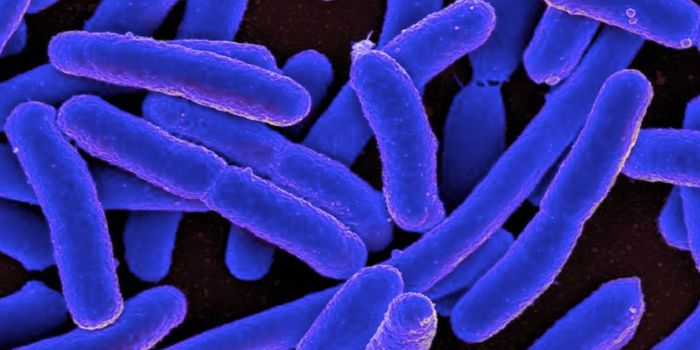New Ideas About How Bacteria Control Cell Division
Cell division is a crucial process for life; in order to create and maintain multicellular organisms, cells have to make more cells by dividing. Unicellular colonies of bacteria survive by dividing individual bacterial cells into two new bacterial cells. Every time a cell divides, it has to replicate all of the genetic material it contains so that each new daughter cell gets a complete genome. Scientists have now learned more about how bacteria coordinate genomic replication with cell division. The findings, which were reported in eLife, change what we thought we knew about the bacterial cell cycle - the process that bacteria go through when they divide.
Dividing Escherichia coli can be seen in the video.
In bacteria, the cell cycle might be thought of as beginning when a cell is created, and ending when the cell divides in two. Previous work has suggested that bacterial cells start dividing when they reach a certain physical size or volume, and that events proceed from there as if on a timer that’s set by the initiation of DNA replication. This work has indicated, however, that the bacterial cell cycle begins and ends when DNA starts getting copied, and that the cell physically divides in two in between two DNA replication events. The timing of genomic replication helps control the cell cycle, suggested the reseaarchers.
This research was performed using a variety of techniques. Led by Professor Erik van Nimwegen at the Biozentrum of the University of Basel, the scientists used time-lapse imaging to monitor a microfluidic device that was designed for growing and monitoring bacteria with a rod shape, like Escherichia coli. The investigators were able to capture images of the growing bacteria over time, and used computational tools to analyze and then model events like cell division, growth, and DNA replication in several kinds of conditions, for thousands of cells.
"Our model indicates that the cell cycle in E. coli starts with the initiation of DNA replication, at which point two different counters start running; one determining when the next cell division should occur, and the other determining when the next initiation of DNA replication should occur," explained the head of the study, Thomas Julou. "Even though we have not yet identified the molecular basis of these two counters, the biomass produced since the last counter reset appears to be the variable controlling when the next division and replication events take place."
They researchers studied the small changes that happen as cells grow normally to understand the mechanisms controlling the events, instead of the more typical approach of using mutations to perturb the system and reveal more about the process.
"A major challenge was to develop statistical methods to analyze the structure of the correlations in the fluctuations of cell cycle parameters such as cell size at birth," said van Nimwegen. "A key new idea that we developed is that, instead of looking for correlations between variables, it is more informative to identify which variables appear to fluctuate independently of each other." The researchers were able to use this process to understand how the bacterial cell cycle is regulated, but it may also have other applications in future studies.
Sources: AAAS/Eurekalert! via University of Basel, eLife









